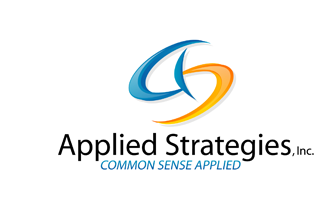Now before this melts down into another of those dreaded problem identification pieces let me share how I think the profession needs to deal with developing solutions. It is quite simple: blue sky thinking, generating creative ideas that are not limited by current thinking or beliefs. Yup (I can hear the 911 calls already) but I truly think the solution lies in various groups of lawyers from all aspects of the profession sitting down unbound by what exists today and focusing instead on what their profession could and should be.
The following excerpt, by Michael Birshan and Jayanti Kar in McKinsey Quarterly's July 2012 edition, captures why this is a solution worthy of consideration:
“We are entering the age of the strategist. A powerful means of coping with today's more volatile environment is increasing the time a company's top team spends on strategy. Involving more senior leaders in strategic dialogue makes it easier to stay ahead of emerging opportunities, respond quickly to unexpected threats, and make timely decisions.”
So if this is what the consumers of your legal services are doing why is the solution any different for the legal profession? Because lawyers are a profession and not a business so the same rules don't apply? Because such an approach is foreign to the profession's culture? The excuses are numerous but in the final analysis they are just that — EXCUSES!
The reason I would broaden the groups at the table to include private practice, in-house counsel, young, old, male, female, gay, non-gay, visible minority, immigrant, etc. is to ensure the participants generate creative ideas not limited by current thinking or beliefs.
I would call upon the law societies and local CBA chapters to organize and facilitate multiple sessions around their respective provinces but participate with their listening ears not their telling voice. The law societies/CBA chapters can funnel their summaries up to a national level where an action plan would be developed and presented to all members for consideration and possible modification and then acted upon. The time frame for such an exercise is a maximum of 18 months from start to execution of the action strategy!
...people estimate the average law school debt in Canada today is closer to $60,000... |
So what are some of the systemic issues that should be included amongst those tackled by these blue sky groups?
“Women now make up a majority of the law school class but that does not mean gender is no longer an issue in many law students' experience,” according to Osgoode Hall Law School dean Lorne Sossin;
“But who loses when firms engage in ‘suicide pricing?' Everyone else, from support staff to the working attorneys to everyone concerned with searching for sustainable business practices. . . . Especially when everyone agrees that we are in a changing industry and need to do a better job of communicating and delivering value. I am not optimistic — unless clients and firms start focusing on improving communication with each other,” says a post on the Above the Law blog;
The Law Society of Upper Canada released a report in 2008 that placed the average law school debt at $45,246. Tuition has been creeping up since then and, it's fair to assume, so have debt loads. Several people estimate the average law school debt in Canada today is closer to $60,000;
-
A recent CNBC article, Courtroom drama: too many lawyers, too few jobs notes: “Going forward, the Bureau of Labor Statistics projects nearly 74,000 new lawyer jobs created in the U.S. over the next seven years. The growth is expected in areas including health law, intellectual property law, privacy law, and international law. But American law schools will graduate about 44,000 students each year during that time, and in doing the math, that means six new lawyers — not including older graduates — will be fighting it out for just one new job.” And it is no different in Canada other than proportionately; and
-
“Teaching students to think like a lawyer is still necessary but it is not sufficient for students to act like a lawyer soon after they graduate,” writes John Lande in Reforming Legal Education to Prepare Law Students Optimally for Real-World Practice in the '2013 Journal of Dispute Resolution'. “Although legal education has evolved in recent decades, the legacy of the Langdellian system makes it hard to combine instruction in legal doctrine, practical skills, and clinical experience. Recognizing the general problems of legal education is fairly easy. Solving them can be quite hard. Law schools serve many constituencies that have demanding and diverse interests.”

